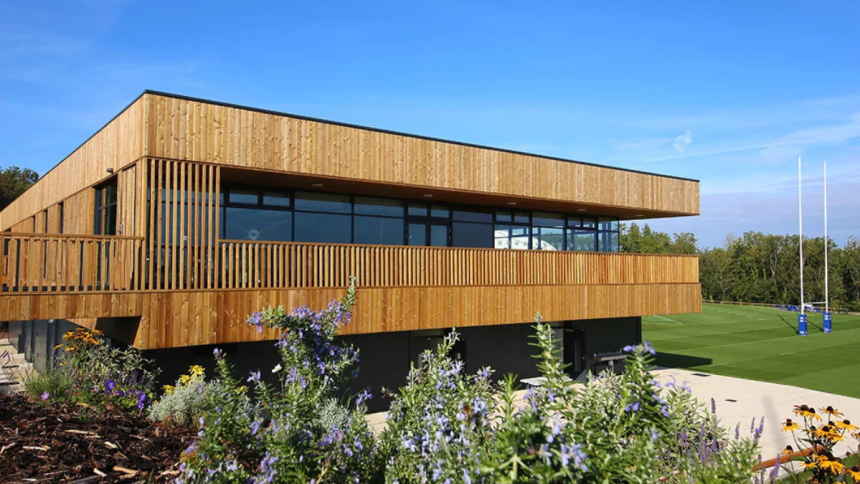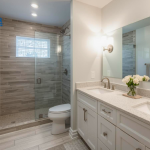In the present day, sustainability has become a crucial factor in architectural design, especially when it comes to building exteriors. As the world shifts towards eco-conscious construction methods, timber cladding has emerged as a top choice for modern buildings. But what makes timber cladding so sustainable? And how does it contribute to environmentally friendly architecture?
To name a few advantages of timber clad buildings, it can be said that timber cladding enhances the aesthetic appeal of buildings as well as provides multiple environmental benefits. By opting for timber, modern structures can reduce their ecological footprint while enjoying the durability and beauty this material offers. So, let’s explore why timber cladding is a sustainable and effective choice for today’s building exteriors.
Natural and Renewable Material
Timber is one of the few truly renewable building materials available. Unlike other construction materials such as concrete and steel, which are finite and require significant energy to produce and have a high carbon footprint, timber is naturally replenishable. Forests around the world can be sustainably managed to ensure that timber is harvested without damaging ecosystems.
The natural regenerative qualities of timber make it a great option for environmentally conscious designs. With proper forestry management, timber production supports biodiversity and ensures healthy forest ecosystems. As a renewable resource, timber cladding helps lower reliance on non-renewable resources.
Lower Carbon Footprint
Timber naturally absorbs and stores carbon dioxide, making it a carbon-negative material when used in construction. Trees absorb carbon dioxide from the atmosphere during their growth, and this carbon remains locked within the wood even after it is used for building. This carbon storage helps offset the greenhouse gases produced by other construction materials.
When timber cladding is used in buildings, it contributes to a reduction in the overall carbon footprint of the structure. Studies show that timber buildings can have up to 50% lower carbon emissions compared to those constructed with concrete and steel. This makes timber an environmentally responsible choice in the fight against climate change.
Energy Efficiency Benefits
One of the advantages of timber cladding is how it enhances the energy efficiency of buildings. The natural insulating properties of timber help regulate indoor temperatures, which reduces the need for artificial heating and cooling systems. This insulation helps maintain a comfortable indoor environment while minimising energy consumption. The use of timber cladding can significantly reduce heating costs during the colder months and cooling costs in the warmer months. By minimising reliance on energy-intensive systems, timber-clad buildings become more energy-efficient and environmentally friendly, contributing to long-term savings and sustainability.
Longevity and Durability
Timber cladding is known for its durability and long lifespan when properly maintained. High-quality timber products can withstand the elements and retain their structural integrity for decades, making them a wise investment for modern buildings. Timber also has a natural ability to resist weathering, decay, and pests, particularly when treated correctly.
When well-maintained, timber cladding can last a lifetime, ensuring that buildings constructed with wood require fewer replacements and repairs over time. This reduces the overall environmental impact, as fewer resources are needed for ongoing maintenance. Timber’s durability means less waste is generated by frequent renovations or repairs.
The Visual Appeal and Versatility
Timber cladding provides a warm, natural aesthetic that adds charm and character to any modern building. The rich texture and grain patterns of wood create a timeless, inviting appearance, which blends well with various architectural styles. Any building, be it contemporary, traditional, or minimalist, is enhanced by timber’s visual appeal.
In addition to its beauty, timber cladding is highly versatile in design. It can be stained, painted, or left in its natural state, which offers endless possibilities for customisation. The flexibility in design makes timber a popular choice for architects who want to create unique, visually striking buildings that align with sustainable practices.
Low Maintenance Requirements
One of the advantages of timber clad buildings is their relatively low maintenance needs compared to other building materials. While timber does require occasional treatment to preserve its appearance and durability, it generally needs fewer repairs and maintenance than materials like brick or concrete. Regular cleaning and a protective coating can help keep timber looking fresh for years.
Timber naturally resists wear and tear, ensuring it doesn’t easily deteriorate. With proper maintenance, timber cladding retains its aesthetic appeal over time. This results in less frequent intervention, thus saving both time and resources in the long run.
Sustainable Sourcing and Certifications
Not all timber is created equal, and it is important to ensure that it comes from sustainable sources. When selecting timber for cladding, it is essential to choose wood certified by reputable organisations such as the Forest Stewardship Council (FSC). FSC certification ensures that the timber has been harvested responsibly, with a commitment to maintaining healthy forests and protecting biodiversity. Sustainable sourcing of timber helps support ethical practices in the forest industry and contributes to the overall sustainability of construction projects. Choosing certified timber assures builders that the material is ethically sourced and supports responsible environmental stewardship.
Thermal Performance of the Constructions and Comfort
Timber cladding contributes to the overall thermal performance of buildings. Due to its natural insulation properties, timber helps regulate indoor temperatures, providing better comfort in both warm and cold climates. As a natural insulator, timber reduces heat loss in winter and keeps interiors cooler in summer, thus lowering the preference for artificial heating or cooling.
This improves the overall energy efficiency of the building and enhances the comfort of its occupants. In this modern era, where energy conservation is crucial, the thermal performance of timber cladding helps lower the dependence on external energy. Thus, it creates more sustainable living environments.
Biodegradable and Nature-friendly Disposal
Timber is one of the most biodegradable materials used in construction. At the end of a building’s life cycle, timber cladding can be easily recycled or repurposed without creating excessive waste. Unlike synthetic materials that may contribute to long-lasting environmental pollution, timber naturally breaks down and returns to the earth without causing harm.
Besides, as a natural material, timber cladding doesn’t contribute to landfill waste when properly disposed of. This makes it a responsible choice for eco-conscious builders who want to minimise the environmental impact of their structures. The biodegradability of timber ensures that buildings constructed with this material are more sustainable throughout their entire lifecycle.
Timber cladding is a sustainable and eco-friendly choice for modern building exteriors. Its renewable nature, carbon storage properties, and energy efficiency benefits make it an attractive option for environmentally conscious construction. So, the advantages of timber clad buildings are enormous. Thus, by choosing timber, builders contribute to a more sustainable future while creating beautiful, resilient structures.
Lynn Martelli is an editor at Readability. She received her MFA in Creative Writing from Antioch University and has worked as an editor for over 10 years. Lynn has edited a wide variety of books, including fiction, non-fiction, memoirs, and more. In her free time, Lynn enjoys reading, writing, and spending time with her family and friends.















